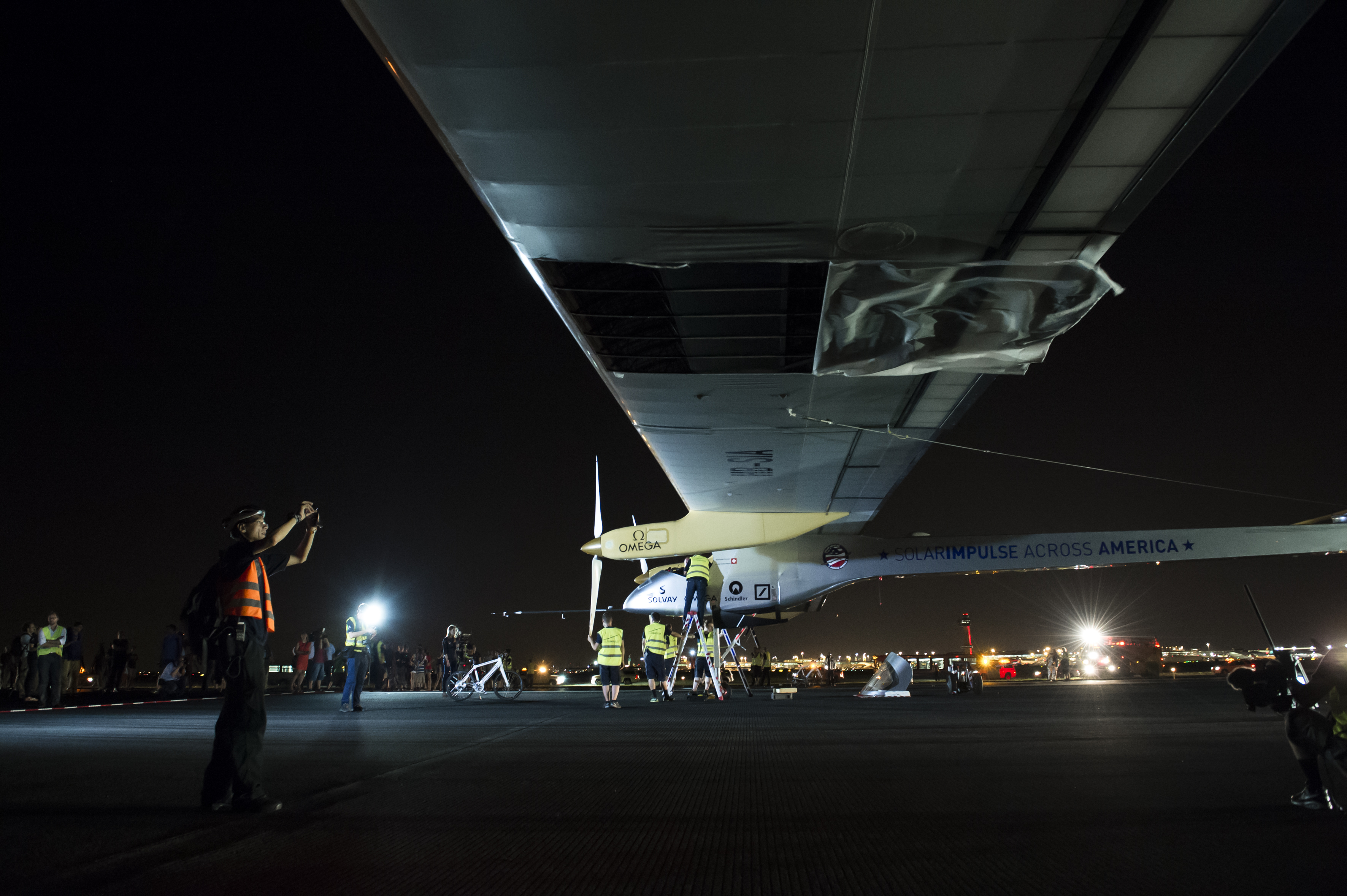
An eight-foot-long tear in the fabric of the lower side of the left wing did not keep Solar Impulse from touching down at its destination July 6, completing a two-month transcontinental journey on solar power alone.
The leg from Washington Dulles International Airport to New York’s John F. Kennedy International Airport took 18 hours and 23 minutes, concluding at 11:09 p.m. Eastern time. Pilot and Solar Impulse Co-founder and CEO André Borschberg skipped the scheduled portion of the flight that would have taken the all-electric HB-SIA prototype over the Verrazano Bridge toward the Statue of Liberty and landed early, though Solar Impulse engineers determined he was not in danger.

Solar Impulse uses four electric engines powered by more than 11,000 solar cells on the wing and horizontal stabilizer. Its 3,511-mile Across America mission from San Francisco, Calif., to New York, N.Y., took a total of 105 hours and 41 minutes flying time over the course of more than two months. The aircraft averaged a speed of 28.8 knots for the journey across the continental United States, according to the Solar Impulse team; it averaged 15 knots for the fifth and final leg, a distance of about 267 nautical miles.
“This last leg was especially difficult due to the damage of the fabric on the left wing,” said Borschberg, according to a blog on the Solar Impulse site. “It obliged the team to envisage all the possible scenarios, including bailing out over the Atlantic. But this type of problem is inherent to every experimental endeavor. In the end, this didn’t prevent us from succeeding in our Across America mission and provided an invaluable learning experience in preparation for the round-the-world tour in 2015.”
Speaking to Solar Impulse TV, a video service on the Solar Impulse website, Solar Impulse initiator, Chairman, and Pilot Bertrand Piccard explained during the leg that engineers had examined pictures taken from a helicopter and determined that the damage would not worsen.
“It makes a little less lift and a little more drag on one wing, so the pilot has to … correct the asymmetry,” he explained.
The Across America mission was the latest in Solar Impulse’s milestones, which include nighttime and intercontinental flights and are intended to culminate in an around-the-world flight.


